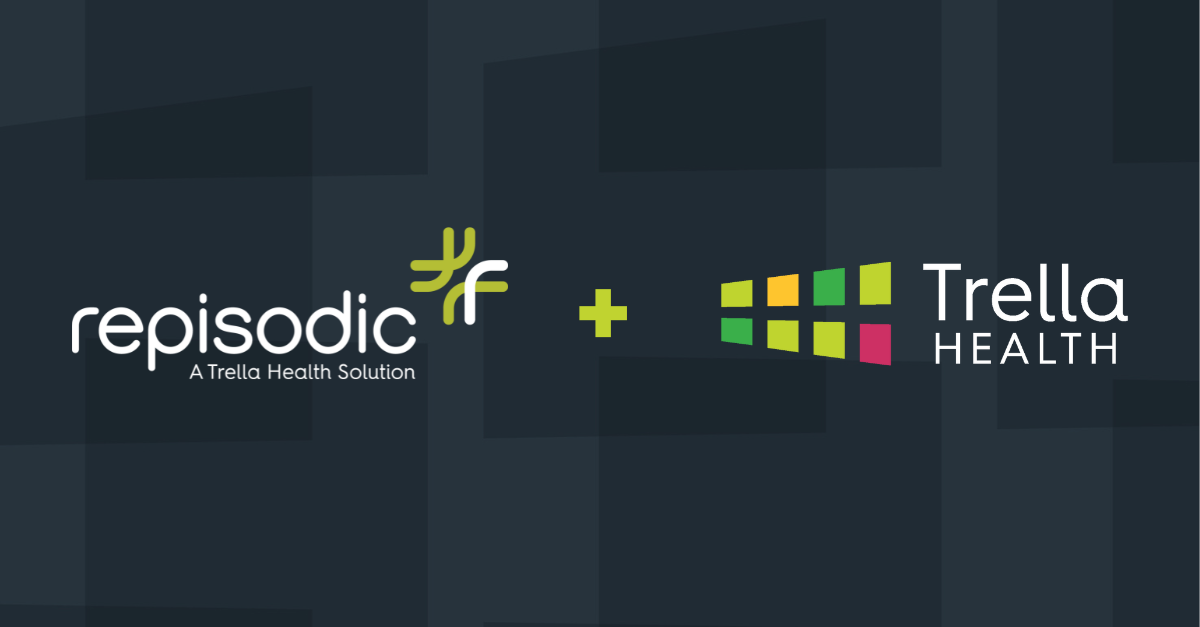Ashton Harrison, Marketing Engagement Manager
With a diverse background of sales and healthcare marketing, Ashton manages Trella’s events, press releases, and media and association relations. After graduating from Florida State University with a major in communications, she began her career at Greenway Health, a EHR company, where she found her passion for the healthcare industry. At Trella Health, she’s able to do all the things she loves about marketing — engaging at events, interactions with partners, and creating marketing pieces that share insight on Trella’s journey.Webinar Recap – Data with a Side of Donuts: Communicating Value to Referral Partners
By Ashton Harrison | January 6, 2022
Relationship-based marketing isn’t cutting it anymore. With the rise of value-based payment models, the impact of COVID-19 on the post-acute care (PAC) market, and other factors, sales teams and business development reps need more than a box of donuts to set their PAC organizations apart from the competition.
To show why referral partners should choose your organization, you must demonstrate its value to them. That means using data about key metrics to show them how you stand out and how partnering with you will benefit them. But how can you choose the correct data? With hundreds of metrics and statistics to choose from, how do you select the ones that your target accounts actually care about?
Trella’s VP of Customer Success, Andy Powell, recently sat down with Alex Asaro, VP of Market Strategy and Partnerships for Mission Healthcare, to discuss how Mission Healthcare has used Marketscape to answer these questions, increase market share, and make data-driven decisions around mergers and acquisitions.
Choose the Right Metrics for Your Audience
Being presented with seemingly unlimited data can be daunting, especially for newer users. Asaro pointed out, without guidance to digest and interpret that data, it can be challenging to choose which metrics are most important and present them. In our conversation, he advised leaders to discuss these challenges with their sales teams, saying, “When I talk to sales teams, it’s not ‘Hey, we’re going to fix this. We’re going to do better.’ Instead, it’s a question of ‘How do we level up?’ And, whatever the timeframe may be, you want to continue improving your understanding of the data and the application of the data,” to take these conversations to the next level eventually.
To start, consider your audience. Are you making your case to a hospital or ACO? Take a look at their readmission rates for patients with diagnoses that your organization typically serves. If your organization has a strong reputation with cardiac patients, dig into the data for this population. You may find some low-hanging fruit to demonstrate how you could help a referring partner decrease readmits and improve outcomes.
Leverage Data to Increase Market Share and Grow Your Organization
Discussing how Mission uses data to grow, Asaro pointed out that it’s not just about your target accounts and competition. Mission Healthcare was founded in 2009 in San Diego, CA, and has been a loyal Trella customer since 2017. In our conversation, Asaro discussed how data from Trella has helped Mission expand into 41 new locations in multiple states within the last year alone. “We have over 100 field reps [using Trella], which is, of course, the obvious application for the service,” Asaro said. Still, Mission doesn’t restrict its use of data to sales and business development.
“Trella has played a role in some of our due diligence when we’re looking at acquisitions.” With the data available through Marketscape, Mission’s team has access to “market saturation, opportunity, performance, and competition. Data and analytics truly are the backbone of many conversations that we have daily, from executive-level leadership to field sales reps. It helps set Mission apart from representatives out in the community who are leading with the donuts and the coffee.”
Develop a COVID-Proof Approach to Marketing
When asked about the impact of COVID-19 on Mission’s business strategy, Asaro said, “I would be lying if I said that Mission wasn’t affected by COVID. However, as we look back to 2020 and throughout much of 2021, we’ve found that, while we did have a decrease in utilization, the impact wasn’t as great as some of the averages that you’re seeing throughout the industry.”
While Mission saw a decrease in volume and utilization, when Asaro consulted performance data, he found that “the figures that we have would indicate that Mission was able to capture market share through the peak of the pandemic. As the value of home-based care became more apparent to patients and providers, the healthcare industry began relying more on home health, hospice, and palliative care services. “We finally had a microscope on our space, and people started to understand and see the value,” Asaro said. “I think the silver lining through all this is that the healthcare industry is realizing that home-based services are the most cost-effective way to deliver care and keep the patients at home where they feel most comfortable and genuinely thrive the most.”
Armed with data to demonstrate how partnering with Mission could benefit acute organizations by decreasing costs, reducing readmits, and providing patients with the proper care setting at the right time, Mission took advantage of this new attitude toward post-acute, home-based care.
Rethink How You Prepare for Scheduled Calls and Drop-Ins
At the peak of the public health crisis in 2020, everyone was focused on virtual connections and how to reach target accounts when in-person meetings were not possible. Today, though, we’re looking at a very different landscape with different challenges. We were curious about how Mission has changed its approach to continue to grow and capture market share in this time?
“If you asked me that question a year ago, I would have said very much a virtual approach. Access became extremely limited. Obviously, we were all involved with the stay-at-home order. But as the vaccines rolled out, we’ve seen many referral sources start to ease up on those in-person restrictions.” While Asaro’s team’s creativity with virtual outreach helped the company maintain and gain ground during the pandemic, Asaro emphasizes the importance of good in-person interactions today.
Access can still be a significant issue whether sales reps are working to get in-person or virtual meetings. When meeting this challenge, Asaro said, “I would love to say that 100% of our meetings are scheduled and included dedicated time for a meaningful conversation with someone who can make or influence decisions. The reality is, though, that sometimes you’re going to be popping in, hoping to get a few minutes of someone’s time for a conversation that hopefully will resonate with them.” You need to have a compelling story supported by data that will stick with your referring partners with that limited time.
“You know, from a marketing standpoint, it’s important to target the right kind of referral source, the right kind of paramedics, and the right kind of patient. And any deviation from that can actually have a significant impact.” This means that you need data on your target audience, the competition, and your own facility. Asaro touched on challenges with today’s staffing shortage. If you aren’t prepared with information on how many beds you have and how many staff members are available to care for your patients, you could be setting your organization up for failure. On the other hand, if you know that you have the staff and resources to provide the right post-acute care for your referring partners’ patients, you could win big in your market.
Rethinking Cold Calls for More Effective Conversations
While the shift from relationship-based marketing to data-driven strategies may seem daunting, Asaro pointed out that pivoting to a more data-focused approach can actually save PAC organizations a lot of time and effort. “When you think about a traditional cold call, for instance,” Asaro said, “You know nothing about the account. You have to walk in, and you have to ask several different questions” to determine if the referral source is a good fit and if you’ll get a good ROI for your time. And, unfortunately, making that determination can take multiple visits over several weeks (or even months). With access to industry data, “we have all the answers to those questions. Having that information condenses the timeframe, and we save a lot of time on calls that wouldn’t be a good investment of our time.”
This shift in focus is significant today, as more and more of your referring partners have access to data on key metrics. “When we first started working with Trella, not everybody had the data; not everybody had the analytics. But these days, you’re seldom going to come across a referral source, whether that’s a hospital, a payer, or a health system, that doesn’t have access to some kind of data. And the last thing you want is to go into a potentially important conversation with someone who knows more about your organization and your performance than you do.”
Asaro stressed that it’s essential to be equipped with a strong understanding of your organization’s limitations and potential deficiencies, as well as the points where you excel. That knowledge will help you prepare for conversations about your performance and the steps your organization is taking to improve on any weak areas.
Don’t Be Afraid to Explore Available Data
Finally, Asaro had some actionable advice for sales reps and leaders as they start to dig into the data. You don’t have to tackle it all at once. Asaro observed that there are multiple levels of users when it comes to data familiarity. Sales reps who first encounter a solution like Marketscape will start by asking questions about their top target accounts, and they’ll dive into how they can use that data to stand out against the competition.
Once these users have started to scratch the surface of available data on referring partners and competing organizations, they’ll move to the next level, in which they start to examine their own organization’s performance. Beyond that, users dive even deeper, looking into market share percentages, specific diagnoses, and other more in-depth metrics.
“To be honest, I would say maybe 15-20 of our sales team are at this level,” and it’s not necessary to use the data successfully. With quick access to key metrics through Trella’s Sales Spotlight solution, sales reps can refresh their knowledge as they walk into a call. This kind of on-the-go data is exceptionally useful, but Asaro emphasized the value of spending time exploring available data outside of calls as well. “I’ve gone down countless rabbit holes just trying to connect dots and pieces,” Asaro said, “but the more time you spend in it, the more you become comfortable with what you’re looking at. I’ve seen instances where we’ve literally broken down a market and then looked at the individual zip codes to find opportunities. Or we’ll look at an area where our market percentage is smaller than we would like to be. Then we use that data to make strategic decisions for our team and our approach.”
Your specific metrics will vary based on your audience, but, the more you work with the data, the more comfortable you’ll get pinpointing the topics and metrics that your target accounts care most about.
Next Steps: Serve Your Data with a Side of Donuts
Relationships will always be important in post-acute business development, but how we build those relationships is changing. It may feel like a massive undertaking to learn everything possible about a target account before a call, especially when access can be a significant challenge. But, as Asaro pointed out, you don’t have to be a top-tier user with a data scientist’s level of knowledge for all your top accounts, your own organization, and your competition to succeed. Start with a single metric, like hospital readmission rates, and use that key point to start telling your story. As you spend more time with the data, you’ll gain more talking points and more perspective on potential opportunities in your market.
For more tips from Asaro and the Mission Healthcare team, and to learn more about how to serve data with a side of donuts on your next call, watch our on-demand webinar.
Trella Health is the leader in market intelligence for the 65+ population, with extensive data sets including Medicare FFS, Medicare Advantage, commercial payers, ACOs, and DCEs. For more insights into how to stand out as a preferred referral partner, schedule a demo today.















